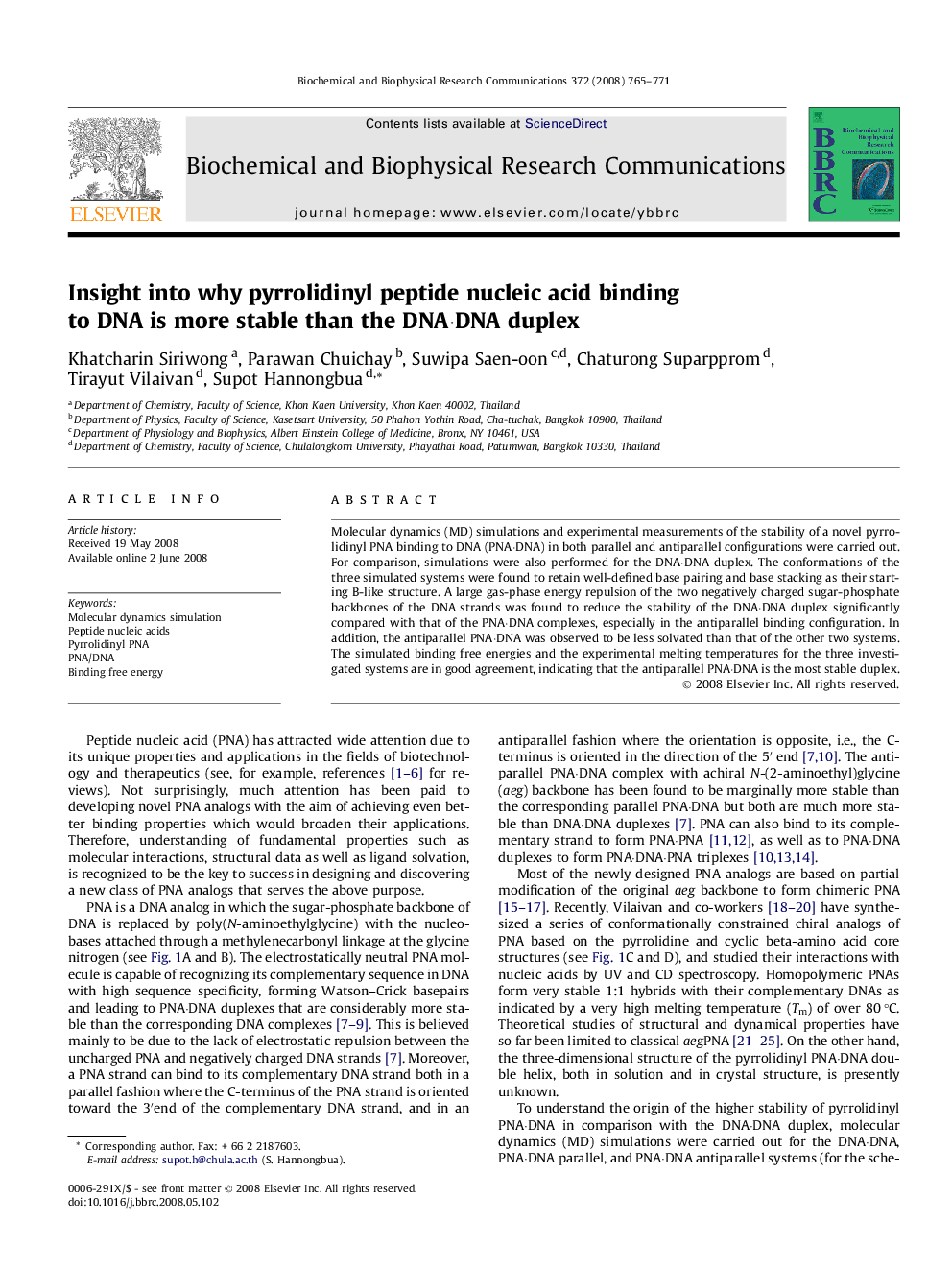| Article ID | Journal | Published Year | Pages | File Type |
|---|---|---|---|---|
| 1935356 | Biochemical and Biophysical Research Communications | 2008 | 7 Pages |
Molecular dynamics (MD) simulations and experimental measurements of the stability of a novel pyrrolidinyl PNA binding to DNA (PNA·DNA) in both parallel and antiparallel configurations were carried out. For comparison, simulations were also performed for the DNA·DNA duplex. The conformations of the three simulated systems were found to retain well-defined base pairing and base stacking as their starting B-like structure. A large gas-phase energy repulsion of the two negatively charged sugar-phosphate backbones of the DNA strands was found to reduce the stability of the DNA·DNA duplex significantly compared with that of the PNA·DNA complexes, especially in the antiparallel binding configuration. In addition, the antiparallel PNA·DNA was observed to be less solvated than that of the other two systems. The simulated binding free energies and the experimental melting temperatures for the three investigated systems are in good agreement, indicating that the antiparallel PNA·DNA is the most stable duplex.
